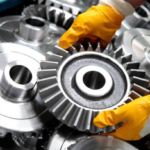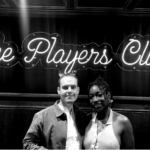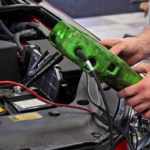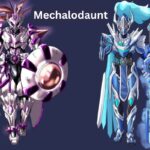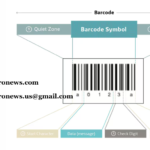When Alessandro Sciarroni stumbled upon the Italian folk dance called polka chinata, it was nearly a lost art, practiced by only five men in the world. In stark contrast, the 1,000-year-old Bavarian/Tyrolean Schuhplattler, with its lederhosen for men, beer steins, and a complex history, was still thriving. Both dances, despite their different states of preservation, became the canvas for Sciarroni’s creative reimagining, which he brings to the inaugural Dance Reflections festival. This event marks the triumphant return of international dance to London post-COVID.
Lederhosen for Men: A Cultural Touchstone
The traditional lederhosen for men play a significant role in the Schuhplattler, symbolizing a rich cultural heritage. These leather shorts are more than just attire; they are a connection to history and identity. The sight of dancers in Lederhosen For Men, performing intricate footwork and rhythmic slapping, evokes a sense of timelessness and continuity.
Lederhosen for men are not just costumes; they are an essential part of the dance’s storytelling. They represent a tradition passed down through generations, embodying the resilience and adaptability of folk culture. As Sciarroni’s dancers perform, the lederhosen become a visual anchor, grounding the modern interpretation in its historical roots.
The Revival of Folk Dance Through Sciarroni’s Eyes
Sciarroni’s journey with folk dance goes beyond mere choreography; it’s a blend of his background in experimental theater and his anthropological curiosity. Growing up on Italy’s east coast, he was captivated by animal behavior, watching birds flock and insects work in unison. This childhood fascination with the natural world translates into his dance work, where he constantly asks, “Why do they do it? How do they know what to do?” These questions drive his exploration of folk dances, reconnecting him with the mysteries of human behavior and the universe.
From Polka Chinata to Schuhplattler: A Dance Odyssey
Polka chinata is a dance performed by two men in a close embrace, spinning in tight circles and bending their knees until they’re almost sitting on the ground. Originating around Bologna in the early 1900s, it was a way for men to show off to women and later became almost competitive before fading into obscurity. Sciarroni learned the dance from scholar Giancarlo Stagni, who had uncovered old recordings of the steps. “It’s very difficult,” Sciarroni admits, “but it’s also beautiful. It’s a dance about trust and sharing the weight of the body.”
On the other hand, the Schuhplattler, known for its energetic stamping and shoe-slapping, has endured through the centuries. Originally a way for men to impress women, it even caught Hitler’s admiration, though it carries no political ideology. Wearing the traditional Authentic Lederhosen and performing with enthusiasm creates a splendid scenario for all. Sciarroni’s version sees dancers performing until their energy wanes, an endurance piece that highlights the joy of living in the present and the communal effort required to keep traditions alive.
The Dance of Tradition and Modernity
“Sometimes tradition is a nest where you can feel protected,” says Sciarroni, “but it can also be a cage.” This tension is at the heart of his work. While he removes traditional music from the dances, he has no intention of erasing tradition. Instead, he teaches polka chinata workshops alongside his performances, preserving the dance while giving it a contemporary twist.
Sciarroni’s approach is to make the dancers and the audience feel the dance rather than just see it. As the dancers hug, crouch, and share the dance’s physical demands, the technique gives way to the emotional, creating a powerful connection that resonates with viewers.
Embracing the Present Through Dance
Sciarroni’s work with dances like the Schuhplattler is not about preserving a static tradition but about allowing it to evolve. The dancers, soaked with sweat, smile and connect with the audience, translating effort into pleasure. This dynamic interaction showcases a group of people supporting each other, embodying the balance of energy and effort.
“When you smile, you release – and receive – a lot of energy,” says Sciarroni. This philosophy underscores his performances, where the dancers’ connection with the audience is palpable. The tradition fights to survive in the present, and in doing so, it becomes a shared experience of joy and community.
The Future of Folk Dance
Sciarroni’s work is a testament to the enduring power of folk dance. By reimagining and reinvigorating traditional dances like polka chinata and Schuhplattler, he ensures they remain relevant and vibrant. His approach blends respect for tradition with a modern sensibility, making these dances accessible and meaningful to contemporary audiences.
As Sciarroni brings these dances to the Dance Reflections festival, he not only showcases their beauty but also their ability to connect people across time and culture. Through his work, the dances live on, evolving and adapting, much like the traditions they represent.
Conclusion: Tradition Meets Innovation
Alessandro Sciarroni’s exploration of folk dances like polka chinata and the Schuhplattler, with their lederhosen for men, is a journey through time and culture. By blending tradition with modernity, he creates performances that resonate deeply with audiences, celebrating the past while embracing the present. His work reminds us that while traditions can be a nest or a cage, they are ultimately a reflection of our shared humanity, continuously evolving and connecting us in unexpected ways.







